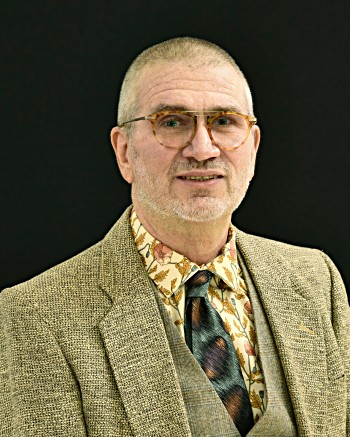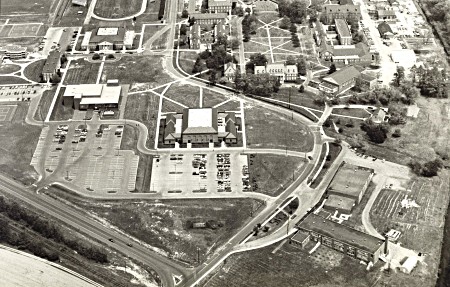
Dr. John B. Jacob has come full circle. Once a ninth grader in Kiah Hall when it housed Somerset Junior-Senior High School, he has come back to campus as an associate professor in the Department of Human Ecology located one building away in Henson Hall.
After a 21-year career that took him to the West Coast’s Washington State University and the Southeast’s West Virginia and Radford universities, Jacob will put his expertise in fashion merchandising and design to work at UMES teaching introductory courses in the fashion industry, fashion forecasting and textiles.
“It’s amazing to be here and to be in a position to give back after benefitting from what UMES offered to the larger community in my youth,” Jacob said. “I recall performances at the Ella Fitzgerald Performing Arts Center, community swimming hours in the Tawes gymnasium and dining at the home of a high school friend whose family resided in on-campus faculty housing.”
Jacob continued his postsecondary education in Virginia at Virginia Commonwealth University where he received a bachelor’s degree in fine arts with concentrations in painting and printmaking. His advanced degrees in clothing and textiles that he applies to his scholarly studies focusing on dress, gender, consumerism and sustainability are from Virginia Tech.
“My scholarly work has focused on issues of social justice and human quality of life through the diverse social and economic aspects of fashion, beauty and gender,” Jacob said. “Most recently, I have been working with a colleague from UMBC on a series of articles and a book about the “little black dress.” These works focus on changes in meaning and use of the “little black dress” from its inception by Chanel in 1926 to the present. The focus is primarily on how this dress signifies gender and body politics as women have negotiated and renegotiated their place on city streets and in work places for nearly a century.”
Where the influence of his undergraduate work can be seen is in his diversion painting for juried and curated exhibitions. Jacob’s impasto abstract works in oil refer to “states of being and connections to nature that go beyond what is perceptible on the material plane of existence.” He has exhibited in Morgantown, West Virginia, at Monongalia Arts Center, Arts Monongalia and the Appalachian Gallery.
Jacob’s creative work in design has been featured in juried design exhibitions with the American Association of Family and Consumer Sciences over his career.

He is a member of the American Association of Family and Consumer Sciences, Popular Culture Association, American Culture Association and the International Textiles and Apparel Association.
“I had no idea that my professional life would lead me back to UMES,” Jacob said. “Now that I have returned, I wish to make a positive difference in the lives of our students and make valuable contributions to the UMES community and its outreach on the Lower Eastern Shore. Toward these ends, I look forward to collaborating, sharing and growing along with my students and colleagues.”
At right: The UMES campus when Kiah Hall (lower right hand corner) was Somerset Junior-High School before Hazel and Henson halls were built. Photo courtesy of UMES PR Office.
Gail Stephens, agricultural communications and media associate, School of Agricultural & Natural Sciences, 410-621-3850, gcstephens@umes.edu.

